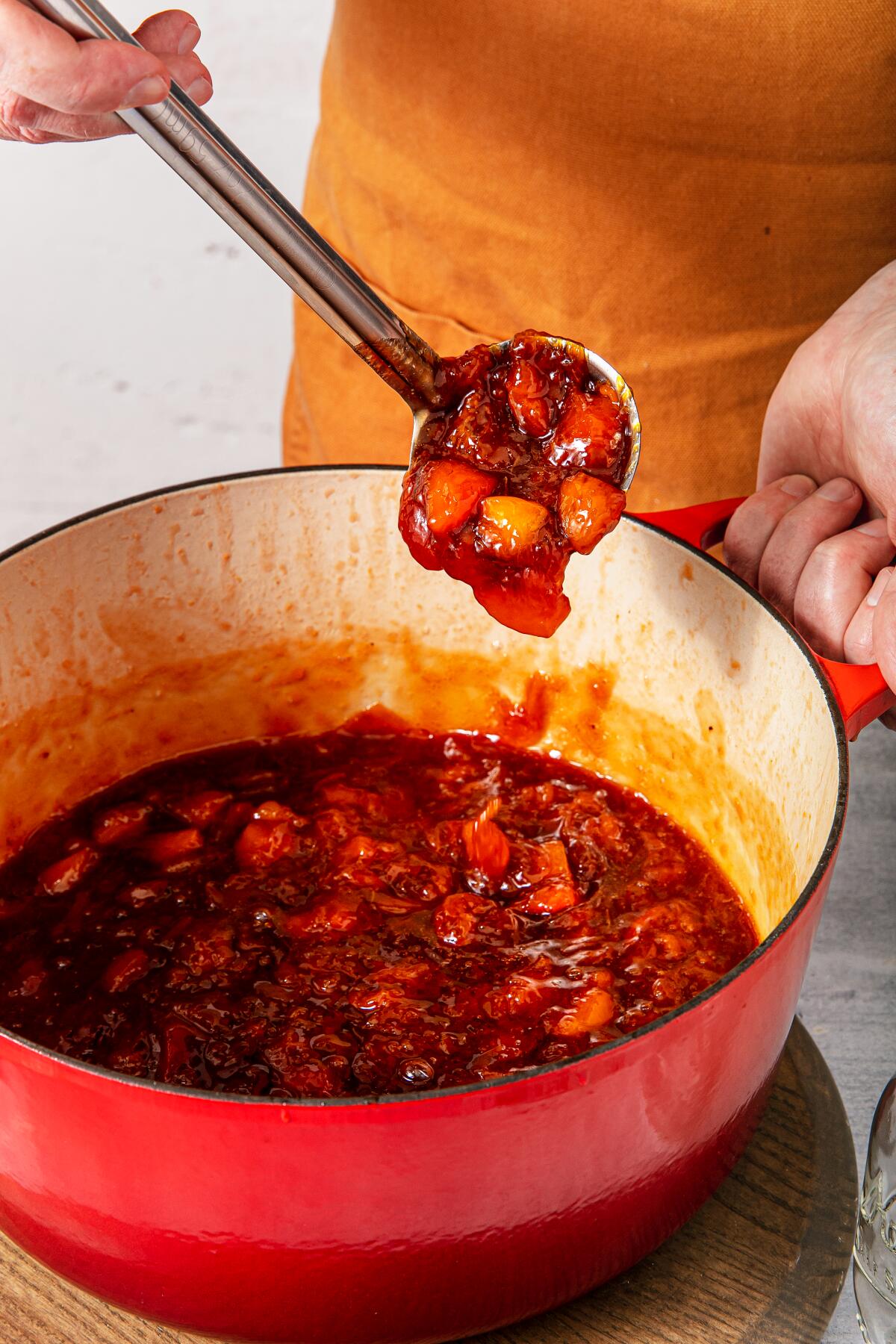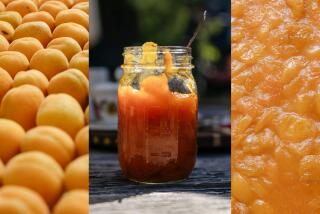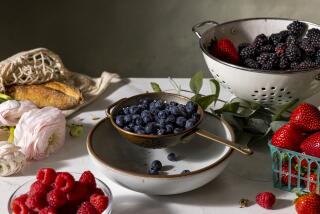What to look for while cooking jam

This story is a component of the feature âSeasons of Preserves: Stone Fruit,â which is part of a four-part series on preserving fruit at home called âL.A. in a Jar.â
While cooking your jam, youâll want to use all your senses to be aware of whatâs going on. The best way to do this is to know what the finished jam should look and act like. This may sound odd, but open a jar of store-bought jam and heat it up in a pan. Once the jam starts bubbling, study how the bubbles react, and notice the texture of the jam and how it moves when you stir it. Memorize those qualities and be attuned to seeing them again with your own jam.
Hereâs what youâll observe during the jam-making process and what it means:
Splattering: There is one truth that you will have to accept when making jam: It will splatter onto your stove. Sometimes it will just be a little bit; other times, it might be a lot. I understand why this is a deterrent for a lot of people, but then I think to myself, âWhatâs something that splatters just as much â or even more â that most cooks know how to make and make all the time?â Tomato sauce. So, if you can deal with the mess that a marinara makes, you can deal with making jam.
âStacking bubblesâ: This sounds like an odd description, but youâll know it when you see it. If youâve ever melted sugar in water while making caramel or candy, youâll notice that the bubbles at first look like regular water bubbles, thin and bursting quickly and of every size imaginable. But once the water is almost all gone and all youâre left with is sugar, the bubbles start to become uniform in size, slow to pop and very shiny. As they form and burst, they seem to âstackâ on top of one another. This is a tell-tale sign that your jam is done, since all the water is gone and what youâre left with is just fruit and sugar.
Shiny texture: Another phenomenon youâll witness while the jam cooks is its change in color and texture. At first, it seems watery and matte, but once it is almost finished and the bubbles appear to stack (see above), the liquid bubbling around the fruit will appear jewel-like, clear and very shiny. Itâs the quality you want in any jam, whether itâs store-bought or homemade, so make sure yours has that sheen before taking it off the heat.
Sticking: The fruit bubbling away in all that sugar will stick to the bottom of the pot, which is why itâs important that you stir regularly at first and often toward the end. Donât be fooled by the beautiful simmering fruit on the surface. If you wait too long between stirrings, the fruit will burn on the bottom of the pot and, in addition to a ruined jam, youâll be scrubbing black, charred fruit matter off your pot. I donât want that life for you, so please stir.
More to Read
Eat your way across L.A.
Get our weekly Tasting Notes newsletter for reviews, news and more.
You may occasionally receive promotional content from the Los Angeles Times.











